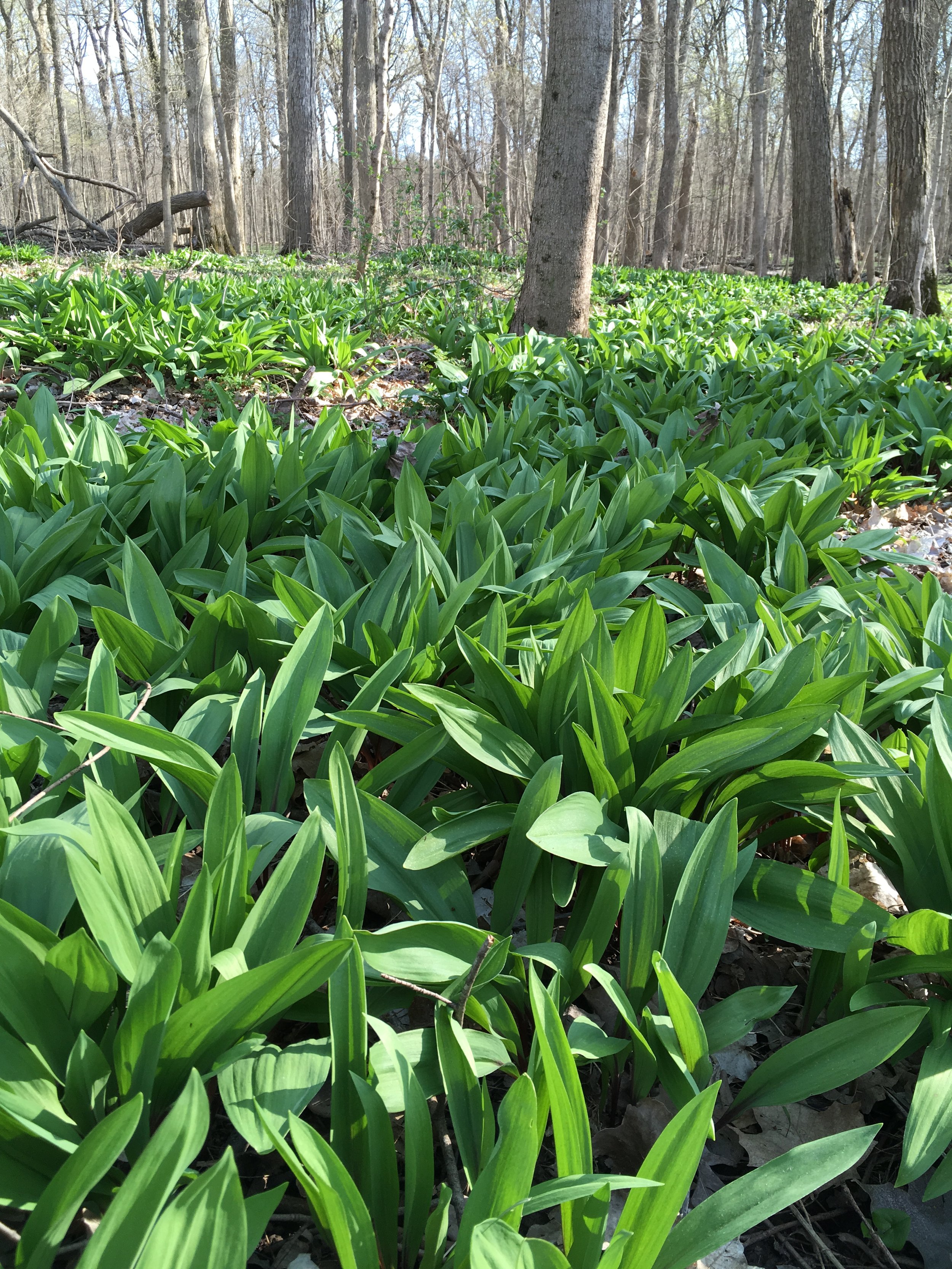 Image 1 of 3
Image 1 of 3

 Image 2 of 3
Image 2 of 3

 Image 3 of 3
Image 3 of 3




Ramps (Wild Leeks)
(Allium tricoccum)
Ramps, also know as wild leeks, are a wonderful edible Spring ephemeral. They are one of our favorite wild greens to emerge in the Spring. Ramps prefer rich, moist woodland soils and are slow growing. The whole plant is edible and delicious. The leaves have a sweet, pungent garlic flavor, with the bulbs being a bit sweeter. Ramps are over harvested in some areas of the Eastern US so we’re very aware of how and where we harvest. We tend to ramps with care, with future generations in mind. We harvest from large patches that we’ve been interacting with for years, while also broadcasting lots of ramp seeds later in the season. We dig a limited amount of bulbs each year to replant. They transplant very well. We have ramps growing all over our yard and gardens that we’ve transplanted as well as grown from seed.
If you like ramps, you should try growing them!
We dig a small amount of bulbs after leaves die back which is usually late May/early June, and also in September. Planting these bulbs right when you receive them will ensure lush leaves the following year. Bury them so that the top point of the bulb is at least 2 inches under the soil.
(Allium tricoccum)
Ramps, also know as wild leeks, are a wonderful edible Spring ephemeral. They are one of our favorite wild greens to emerge in the Spring. Ramps prefer rich, moist woodland soils and are slow growing. The whole plant is edible and delicious. The leaves have a sweet, pungent garlic flavor, with the bulbs being a bit sweeter. Ramps are over harvested in some areas of the Eastern US so we’re very aware of how and where we harvest. We tend to ramps with care, with future generations in mind. We harvest from large patches that we’ve been interacting with for years, while also broadcasting lots of ramp seeds later in the season. We dig a limited amount of bulbs each year to replant. They transplant very well. We have ramps growing all over our yard and gardens that we’ve transplanted as well as grown from seed.
If you like ramps, you should try growing them!
We dig a small amount of bulbs after leaves die back which is usually late May/early June, and also in September. Planting these bulbs right when you receive them will ensure lush leaves the following year. Bury them so that the top point of the bulb is at least 2 inches under the soil.